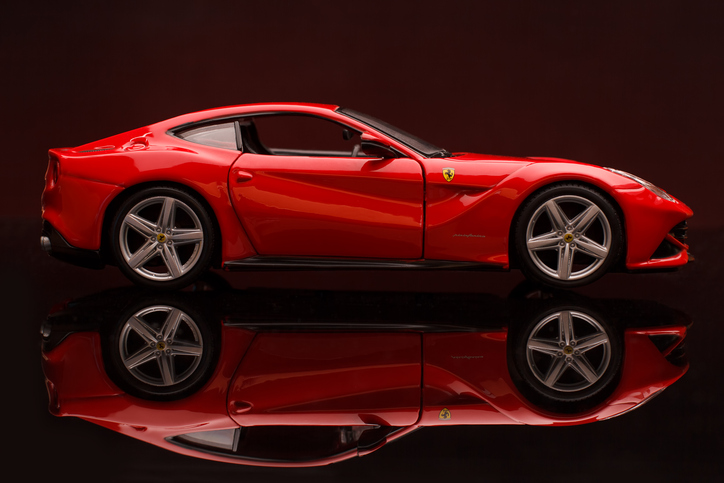You may remember when Harley-Davidson famously tried for years to trademark the sound of their V-twin motorcycle engine. The process was held up in legal limbo for so long that they ended up walking away and withdrew their request from the United States Patent and Trademark Office. However, no one can deny how crucial the sound of a performance vehicle is no matter if it is a Harley, Porsche, Ford Mustang…or Ferrari.
Ferrari is all too aware of the importance sound brings to the automotive experience, and the sound of its high-revving engines are a longstanding hallmark of the brand. Long a holdout, Ferrari have in recent years been introducing more turbocharged engines in their lineup, despite angst among the Ferrari faithful about compromising that famous sound or introducing “turbo lag.” As reported in Car and Driver, Ferrari’s application filed early this year, and just recently published with the European Patent Office, outlines a forced-induction setup that focuses “equally on improving the turbo’s efficiency and engine power while diminishing the muffling sound turbos generally generate.”
Car and Driver explains in detail the process outlined in the application:
Ferrari’s new system uses a turbine in the exhaust plumbing to spin a generator, which in turn sends power to a battery for storage or straight on to an electrically driven supercharger that stuffs air into the engine’s intake. This differs from a regular turbo, or even an electric turbocharger, in that there is no physical connection between the turbine and impeller wheels. (Standard electric superchargers make do without the turbine, instead relying solely on the existing electrical network to power a compressor.) Separating the exhaust-driven turbine (and its attendant generator) from the compressor enables automakers to mine energy stored in a battery or capacitor to spin up the compressor immediately, even in the absence of significant enough energy in the exhaust to spin the turbine—eliminating the lag that can afflict traditional turbos.
While Ferrari is developing a system that brings the performance and fuel-economy benefits that come with turbocharging, one of the big advantages with this approach is clearly the sound of this system. In the Description of the Invention in the Patent, they state that this invention “allows improving the sound ‘quality’ in the exhaust.” The “tone” can be controlled to achieve the “desired acoustic emission” in the exhaust. They outline that this part of the system would be controlled by a microphone placed inside the car by the driver’s head. They note “it could be the same microphone used to make hands-free calls.”
Although other automakers, including Porsche and BMW, have introduced cabin-calibrated (and in some cases synthetic) sound, Ferrari’s is an interesting approach that seems to incorporate the entire system. Overall, this is a brilliant way for Ferrari to give drivers the experience they are looking for — and of course legally protect their methods.







